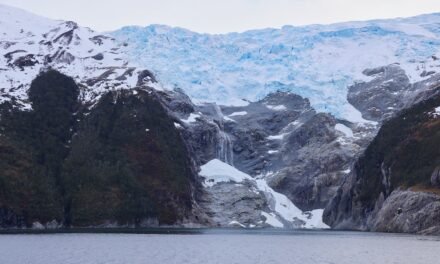The polar vortex, a term that occasionally makes headlines during extreme weather events, is a phenomenon that affects the weather in the Northern Hemisphere, particularly during the winter months. But what exactly is polar vortex, and how is it related to climate change? Let’s break it down in simple terms.
The Basics of the Polar Vortex
The polar vortex is essentially a large area of low-pressure and cold air that typically resides around the Earth’s North Pole. It’s a natural part of our planet’s weather system, and it’s held in place by a combination of the Earth’s rotation and the temperature differences between the Arctic and mid-latitudes. Normally, this frigid air remains closer to the North Pole, thanks to the strong polar jet stream—a high-altitude, fast-moving wind—that acts as a sort of barrier.

Polar vortex explained by NOAA
Why Do Polar Vortex Events Occur?
When the polar vortex is stable, the polar jet stream keeps it locked near the North Pole. The strength of the polar jet stream depends on two factors:
The temperature difference between the warmer mid-latitudes and the polar region, and the Earth’s rotation.
A large temperature difference results in a strong jet stream that maintains the stability of the polar vortex. However, when this temperature difference decreases, the jet stream weakens and becomes more prone to fluctuations. In such cases, the polar vortex can become unstable and even split into multiple parts, extending farther south than usual.

Polar vortex and polar jet stream explained by UCAR
The Impact of Climate Change on the Polar Vortex
In recent years, the behavior of the polar vortex has become more extreme due to climate change. Global warming has led to the loss of Arctic sea ice, transforming the once highly reflective surface into a dark absorptive one. This change warms higher latitudes and reduces the temperature difference between the mid-latitudes and the polar regions. As a result, the polar jet stream weakens and becomes more erratic, dipping into lower latitudes and bringing polar air with it.
Climate scientists like Paul Ullrich, an associate professor of regional climate modeling at UC Davis, predict that future climate change will further weaken the polar jet stream, giving rise to more extreme and unusual weather patterns. This means we can expect more instances of the polar vortex extending its icy grip farther south, potentially affecting regions that are unaccustomed to such extreme cold.
The Polar Vortex’s Impact on Winter Weather
 The polar vortex doesn’t always influence winter weather in lower latitudes, but when it does, the effects can be extreme. A strong polar vortex often results in a more stable polar jet stream that remains farther north, leading to particularly frigid conditions in the Arctic but milder weather for those in mid-latitudes.
The polar vortex doesn’t always influence winter weather in lower latitudes, but when it does, the effects can be extreme. A strong polar vortex often results in a more stable polar jet stream that remains farther north, leading to particularly frigid conditions in the Arctic but milder weather for those in mid-latitudes.
On the flip side, a disrupted polar vortex can lead to significant changes in the polar jet stream. It may meander, creating deep troughs and steep ridges that remain stationary for days. Under these high-pressure ridges, warm air can flood northward into the Arctic, causing extreme ice melt. In contrast, polar air fills the low-pressure troughs, pushing wintry conditions farther south.
This interaction between the polar vortex, the polar jet stream, and the resulting winter weather isn’t fully understood, but it plays a crucial role in the extreme weather patterns we witness during polar vortex events.
The Polar Vortex and Global Warming
 Many have wondered whether global warming is making severe winter weather outbreaks more likely, which might seem counterintuitive. Yet, there’s some logic behind the idea. Disruptions in the polar vortex can occur when large-scale atmospheric waves interact with it, and changes in surface temperature and pressure—linked to factors like sea ice loss—can influence the polar vortex. So, even though we’re experiencing an overall warming trend, we might see an increase in the severity of individual winter weather events in certain locations.
Many have wondered whether global warming is making severe winter weather outbreaks more likely, which might seem counterintuitive. Yet, there’s some logic behind the idea. Disruptions in the polar vortex can occur when large-scale atmospheric waves interact with it, and changes in surface temperature and pressure—linked to factors like sea ice loss—can influence the polar vortex. So, even though we’re experiencing an overall warming trend, we might see an increase in the severity of individual winter weather events in certain locations.
It’s important to note that there’s no clear long-term trend in the behavior of the polar vortex. While there was a period in the 1990s with fewer disruptions, the trend reversed in the late 1990s, leading to more frequent disruptions. This fluctuation suggests that the behavior of the polar vortex is influenced by natural variability and isn’t following a straightforward trend. Furthermore, our understanding of the polar vortex is limited by a relatively short observational record.
Climate Change Affects Polar Vortex
The polar vortex is a fascinating and complex meteorological phenomenon that can have far-reaching consequences for our weather and Climate change is altering its behavior, leading to more frequent and extreme events. While it’s challenging to predict the exact impact of the polar vortex on our winter weather, it’s clear that understanding these interactions is crucial for preparing for and mitigating the effects of extreme cold events in a changing climate.










